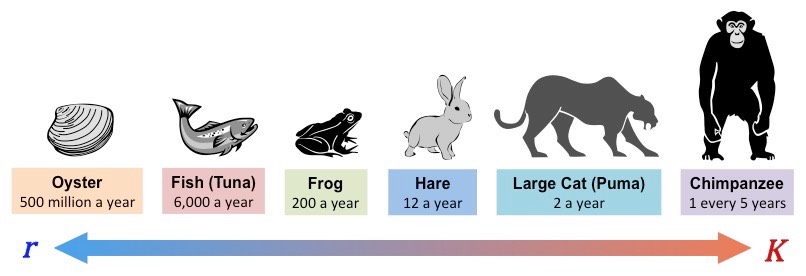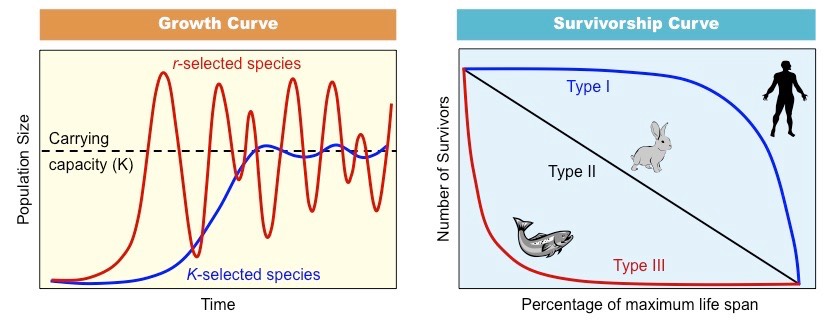The terms r-selection and K-selection are used by ecologists to describe the growth and reproduction strategies of organisms
- r-selected species have a high growth rate but low survivability (“cheap” offspring)
- K-selected species have a low growth rate but high survivability (“expensive” offspring)
r-selection
- Occurs in unstable environments where there are ecological disruptions and resources are used for maximising reproduction
- There are usually many offspring per brood, which require little parental care and have a high rate of mortality
- The body size of offspring is typically small and they have an early onset of maturity (short developmental span)
- Population size is typically variable (highly fluctuating) and an example of a r-selected organism is a pioneer species
K-selection
- Predominates in stable or predictable environments where resources are used for maximising long-term survival
- There are usually very few offspring per brood, each requiring high levels of parental care (resulting in low mortality)
- The body size of offspring is typically larger and they have a late onset of maturity (long developmental span)
- Population size is typically stable (reaches carrying capacity) and an example of K-selection is a climax species
It can be difficult to determine if a species is following a r-strategy or a K-strategy as they represent two ends of an extreme
- In reality, most organisms typically demonstrate an intermediate strategy somewhere along the spectrum (e.g. type II growth)
- Some species may even change their selection strategy according to environmental conditions
The r-K Scale of Reproductive Strategy: Offspring Numbers

Comparison of r-K Strategies: Growth Rate and Survivorship

